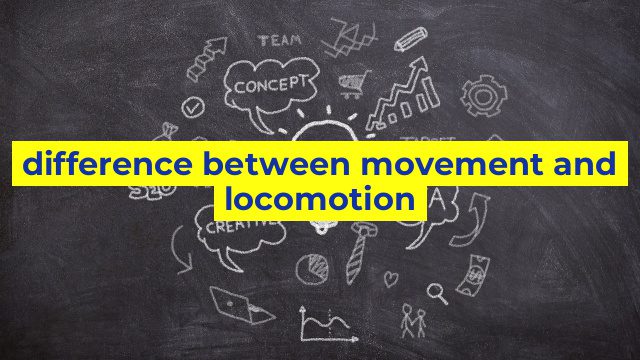Difference Between Movement and Locomotion: Understanding the Basics
Movement and locomotion are two terms that are often used interchangeably, but they are quite different. While both refer to the way things move, there are significant differences between the two.
What is Movement?
Movement refers to any kind of motion or change in position of an organism or object. It can be voluntary or involuntary and includes various kinds of motions like waving your hand, rotating your head, and even blinking your eyes. Movement is often controlled by muscle groups in the body and is essential for various purposes like breathing, digesting food, and even talking.
What is Locomotion?
Locomotion, on the other hand, specifically refers to the movement of an organism from one place to another. It involves the use of muscles and limbs to move the body through space, like walking, crawling, swimming, or flying. Locomotion is more complex than movement as it relies on coordination between different body parts, muscles, and joints, as well as special adaptations to different environments.
Key Differences Between Movement and Locomotion
1. Purpose: Movement can have various purposes, whereas locomotion has a specific goal of transporting an organism from one point to another.
2. Complexity: Locomotion involves more complex movements compared to simple movements, requiring different levels of coordination and adaptations.
3. Muscles and Joints: Locomotion involves the use of specific muscle groups and joint movements, which differ from those involved in simple movements.
4. Adaptations: Different organisms have evolved specific adaptations for different types of locomotion, such as wings for flying or flippers for swimming. Movement, however, does not require such adaptations.
Why Understanding the Difference Matters
Understanding the difference between movement and locomotion is important as it helps to better understand the movement of different organisms, which can have significant implications in various fields. For instance, it can help in designing robots that mimic the movement of animals or in analyzing the gait of humans to diagnose movement disorders.
In conclusion, movement and locomotion are two distinct but interrelated concepts that involve different types of motions and adaptations. Knowing the difference between the two can be helpful in a variety of fields and can deepen our understanding and appreciation of the diverse ways living organisms move.
Table difference between movement and locomotion
| Term | Definition |
|---|---|
| Movement | The act or process of changing position or place. |
| Locomotion | The ability to move from one place to another under one’s own power. |
| Difference | Movement refers to any change in position or place, whereas locomotion refers specifically to the ability to move under one’s own power. Locomotion is a type of movement. |


